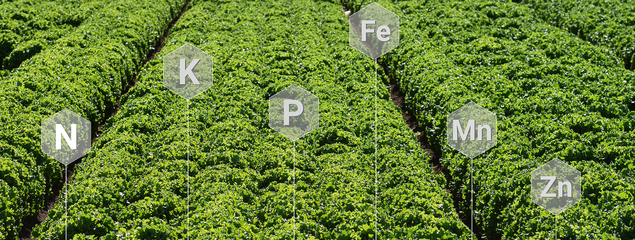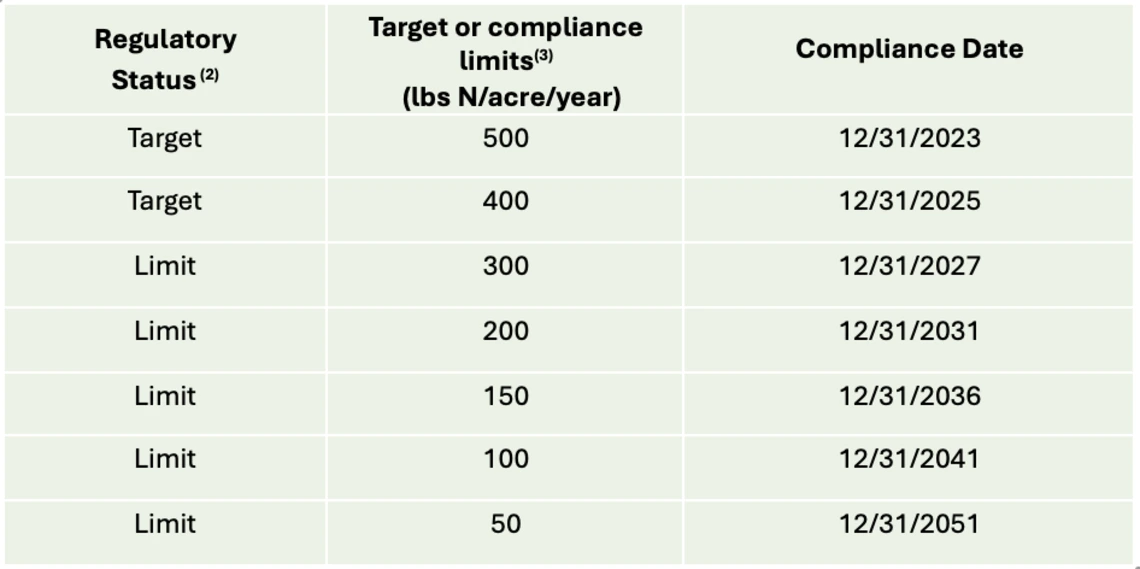
Improve Plant Nutrition
Fertilizer Guidelines for Vegetable Crops in Arizona
Special Sections (4)
California Water Board Irrigated Lands Regulatory Program (ILRP) (4.9)
Most growers in the Yuma area also grow vegetables on land west of the Colorado River in the Bard Water District (BWD) of California. Nitrogen (N) fertilizer management in the BWD is subject to regulations mandated by the state of California. Regulation pertaining to N fertilizer use in BWD falls under the California Irrigated Land Regulatory Program [ILRP (116)] and is administered by the California Water Board Region 7 office (CWB R7). The IRLPs implemented in different regions of California were largely based on the precedent set by the ILRP developed for the San Joaquin Valley [CWB R5 (117)].
The N fertilizer restrictions of the regional ILRPs are based on an objective criterion that seeks to keep the difference between N-fertilizer applied and N fertilizer removed by the harvested crop at or below a set of compliance targets and limits that vary with time (e.g., Table 4-9-1). In other words, the objective is to limit the sum of the residual N left in the soil, that in the crop residue not harvested, and the amounts lost through volatilization, denitrification, leaching etc. over a set time period to a prescribed target. For example, the timetable for achieving set compliance limits in the Central Coast Region of California (ILRP of CWB R3 is summarized in Table 4-9-1, which shows compliance limits steadily decrease from a more accommodating target of 500 lb of N/acre to be achieved by December 31, 2023 to the rather stringent limit of 50 lb of N/acre by the end 2051. It should be noted that as of this writing, such a timetable has not yet been set for the BWD by the California Water Board Region 7 office (CWB R7). However, it is anticipated that the target compliance limits applicable to BWD would likely mirror those proposed for the Central Coast Region.
The ILRPs allow growers to participate individually or organize into coalitions for compliance verification audits and reporting purposes. Growers within the BWD operate under the Bard Unit Coalition Group [BUCG (118)], which is led by a committee whose members come from area growers. The committee oversees the collection and processing of relevant data and reporting by BWD administrative staff and outside consultants. The BUCG is currently operating under a conditional waiver until the program takes full effect. Current reporting requirements are limited to data on nitrate-N levels at selected wells and drains and farm-scale annual N-fertilizer application rates. However, when the program takes full effect, estimated N-removal by crop and progress toward compliance targets set by the regional CWB need to be included in the reported data. Note that in regions of the state, such as the Central Coast, the contribution of N-fertilizer from irrigation water needs to be taken into account in the determination of applied N fertilizer. However, in the BWD, which obtains its supply from the Colorado River, the contribution of irrigation water to the total N input is negligible (Section 2.1).
Considering a scenario where compliance requirements of the Central Coast Region apply to the BWD, it is expected that the N fertilizer guidelines presented on this webpage can help growers in BWD meet compliance requirements (summarized in Table 4-9-1) through the year 2040. However, new and improved fertilizer management practices may need to be developed to meet the rather stringent target of 50 lbs of N/acre by 2051. Meeting this compliance target will be particularly challenging for some crops, where N in the harvested portion of the crop is less than 60% that in the whole crop. To ensure compliance through 2051 for these crops, a wider application of promising N-fertilizer management technologies such as CRN (Section 4.5) and VR (Section 4.6) could be needed, which is feasible primarily by lowering costs through innovative research and development.
This IRLP does not apply to land where water is delivered by the BWD to the Quechan reservation unit. Nor does it apply to irrigated land on the Island.

Table 4-9-1
Regulatory targets, compliance limits, and compliance dates for the Central Coast (California Water Board Region 3 Office, CWB R3) (1).
(1) As of the completion of this webpage, compliance timetables have not been set for the Bard Water District by CWB R7.
(2) For the rows labeled as target, the corresponding levels are aspirational and are not to be enforced. However, for those labeled as limit, the corresponding values represent enforceable. compliance limits.
(3)A-R is Nitrogen applied less removal in the harvested crop.

